January 2014: In This Issue
The beginning of 2014 offers each of us the opportunity to reflect on the progress we have made over the past year as a leader and an organization. This candid self assessment allows us to identify, address and implement those changes necessary to improve our leadership capabilities and create a sustainable, high performing organization.
To assist you in this exercise, this edition of A New Leaf highlights three, key self assessment questions and excerpts from selected authoritative resources shared with you during 2013. One of your primary leadership responsibilities is to effectively promote and manage change. Individually, and collectively, the referenced resources provide you with guidance necessary to successfully assume your “change agent” role.
You may read the full review of the resource in the monthly newsletter referenced following each of the resource titles.
See Change Management wishes you continued success in 2014 in effectively managing the positive evolution in your LEADERSHIP and organizational capabilities.
2013 Self Reflection:
QUESTIONS:
Have I Been the Best Leader I Can Be?
Have I Positioned My Business with a 2014 “Winning” Strategy?
Have I Made the Necessary Progress in Creating a Team of “A Players”?
RESOURCES:
Have I Been the Best Leader I Can Be?
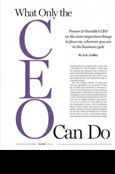 In “What only A CEO Can Do” (July 2013 Newsletter), P&G Chairman A. G. Lafley identifies the following four key tasks related to the one critical job that only you as CEO can do; successfully linking the outside world (economy, customers, technology, etc.) with the inside world (your organization):
In “What only A CEO Can Do” (July 2013 Newsletter), P&G Chairman A. G. Lafley identifies the following four key tasks related to the one critical job that only you as CEO can do; successfully linking the outside world (economy, customers, technology, etc.) with the inside world (your organization):
- Defining the MEANINGFUL “OUTSIDE” of critical constituencies of the organization
- Deciding WHAT business you are IN…and NOT in
- Balancing sufficient yield in the PRESENT with the necessary investment in the FUTURE
- Shaping the VALUES and STANDARDS of the organization
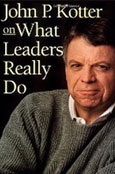 How well have you performed these CEO “only” tasks over the past year? Harvard Business Professor John Kotter in “What Leaders Really Do” (October 2013 Newsletter) contrasts the role of leadership with that of management as “coping with change” as compared to “coping with complexity”. He differentiates the key tasks of each role under the following framework:
How well have you performed these CEO “only” tasks over the past year? Harvard Business Professor John Kotter in “What Leaders Really Do” (October 2013 Newsletter) contrasts the role of leadership with that of management as “coping with change” as compared to “coping with complexity”. He differentiates the key tasks of each role under the following framework:
- Deciding what needs to be done-Leaders “set a direction”, managers “plan and budget”
- Creating networks and relationships to get things done-Leaders “ align”, managers “organize and staff”
- Ensuring that people do their job-Leaders “motivate and inspire”, managers “control and problem solve"
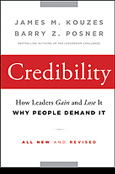 Where have you been spending most of your time over the past year…. acting as a leader…..manager…. both….or neither? In “Credibility-How Leaders Gain and Lose It, Why People Demand It” (July 2013 Newsletter), leadership expert James Kouzes articulates how fundamental this important trait is to your leadership success. His research clarifies the key qualities constituents look for in their leaders and formalizes the following six disciplines integral to earning and sustaining “Credibility”:
Where have you been spending most of your time over the past year…. acting as a leader…..manager…. both….or neither? In “Credibility-How Leaders Gain and Lose It, Why People Demand It” (July 2013 Newsletter), leadership expert James Kouzes articulates how fundamental this important trait is to your leadership success. His research clarifies the key qualities constituents look for in their leaders and formalizes the following six disciplines integral to earning and sustaining “Credibility”:
- Discovering your self
- Appreciating your constituents
- Affirming shared values
- Developing capacity
- Serving with a purpose
- Sustaining hope
The heart of leadership Credibility lies in DWWSWWD; Doing What We Say We Will Do.
How effective have you been in DWWSWWD and in developing the above key disciplines?
Have I Positioned My Business with a 2014 “Winning” Strategy?
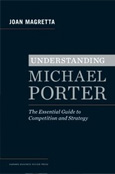 In “Understanding Michael Porter” (April 2013 Newsletter), Joan Magretta successfully translates Harvard Business Professor Michael Porter’s voluminous research into practical insights on strategy development. These include:
In “Understanding Michael Porter” (April 2013 Newsletter), Joan Magretta successfully translates Harvard Business Professor Michael Porter’s voluminous research into practical insights on strategy development. These include:
- Providing a clear definition of competitive STRATEGY which focuses on how your organization is UNIQUE and creates sustainable VALUE to the marketplace
- Identifying the FIVE COMPETITIVE FORCES impacting the structure and strategies of all industries
- Clarifying the importance of and need for a COMPETITIVE ADVANTAGE
- Setting forth the key components of an organization’s VALUE PROPOSITION
- Articulating the FIVE TESTS that an effective STRATEGY satisfies
Does your 2014 STRATEGY address the key components above? If not, what is the likelihood you will be maximizing your success in 2014?
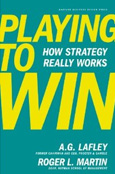 In “Playing to Win” (April 2013 Newsletter), advisor Roger Martin successfully collaborated with CEO A.G. Lafley in detailing their successful strategic playbook implemented at P&G. As CEO of P&G, Lafley relied heavily on the strategic guidance of both Martin and Michael Porter, ultimately distilling his leadership team STRATEGY discussions to the following five questions:
In “Playing to Win” (April 2013 Newsletter), advisor Roger Martin successfully collaborated with CEO A.G. Lafley in detailing their successful strategic playbook implemented at P&G. As CEO of P&G, Lafley relied heavily on the strategic guidance of both Martin and Michael Porter, ultimately distilling his leadership team STRATEGY discussions to the following five questions:
- WHAT is our winning ASPIRATION?
- WHERE will we PLAY?
- HOW will we WIN?
- WHAT capabilities must we have in place to WIN?
- WHAT management systems are required to support our CHOICES?
The book provides practical case studies of how this model resulted in superior market performance during Lafley’s CEO tenure. Has your 2014 STRATEGY addressed the key playbook questions above?
Have I Made the Necessary Progress In Creating a Team of “A Players”?
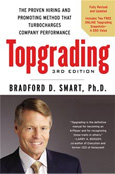 All organizations require extraordinary internal capabilities to excel. In “Topgrading” (January 2013 Newsletter), Bradford Smart highlights the costs/benefits of successful hiring practices and details a model used successfully at companies from GE to Honeywell to hire “A players”.
All organizations require extraordinary internal capabilities to excel. In “Topgrading” (January 2013 Newsletter), Bradford Smart highlights the costs/benefits of successful hiring practices and details a model used successfully at companies from GE to Honeywell to hire “A players”.
Topgrading is defined as the practice aimed at filling at least 75% of the positions in an organization with candidates in the top 10% of the talent pool available (an “A player”). A key responsibility of leadership is to instill a culture dedicated to excellence, including the employee selection process. To assist you in that process, Bradford’s 12 step model maximizes the likelihood of hiring the best talent available.
As you reflect on your organization today, how many more A players exist now compared to a year ago? If you have not been successful in strengthening your internal capabilities this past year, where does this need to be on your priority list for 2014?
©2013 See Change Management. All Rights Reserved. Site credit


